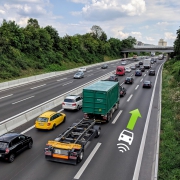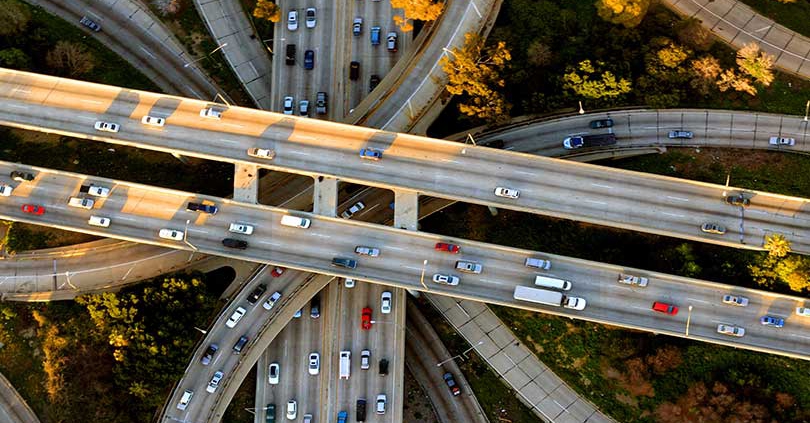Three Interesting Facts About Electricity
Electricity turns dark into light, makes hot foods cold and cold foods hot, washes the dishes and searches the internet. It is essential to our everyday lives, so much so that we rarely think about it. But behind the scenes, interesting things are happening.
Here are three interesting facts about electricity that cause even some experts to scratch and shake their heads.
1. Electricity must be used or stored after it’s generated.
A rechargeable battery stores electricity — more on that later. But the kind of electricity you use in your home needs to be used after it’s generated.
It’s true. Electricity produced from power plants, solar panels, wind turbines and hydro dams in the U.S. needs to be perfectly timed for when you decide to cook dinner, wash clothes or watch TV. The national grid, made up of power generators, wires and substations, is an incredibly complex network that makes electricity flow smoothly.
A vast and intricate system of devices controls that power flow in a precisely balanced way so that when you flip a switch calling for additional electricity, somewhere else a power source ramps up to provide the additional electricity you require.
It’s one reason utility operators must be strategic when adding renewable energy to the nation’s fuel mix — a coal or natural gas plant can ramp generation up or down fairly quickly to meet changing energy demand. Solar energy and wind power depend more on the whims of Mother Nature, which adds an extra challenge to power management. However, technology advances are making this challenge easier to deal with and more large-scale battery storage is also helping.
Big batteries offer another way for electric utilities to better balance the flow and timing of electricity and large-scale battery storage technology is improving rapidly. A few of Colorado’s electric cooperatives have incorporated battery storage into their distribution systems and more storage is being planned. Wider use of large utility-scale batteries will make it much easier to add more solar and wind energy to the grid, allowing electric co-ops and others to store energy that’s generated when it’s breezy and sunny for use at night and during calm weather.
2. Power out? Blame a squirrel.
While severe weather causes most outages, if it’s nice out and your electricity goes off, it could be caused by a squirrel.
We all know to play it safe around electricity, but squirrels don’t. They scamper and chew around transformers, substations and utility poles where they can disrupt high-voltage equipment, shutting down power for you and your neighbors.
We all know to play it safe around electricity, but squirrels don’t. They scamper and chew around transformers, substations and utility poles where they can disrupt high-voltage equipment, shutting down power for you and your neighbors.
But it’s not just squirrels. Snakes, birds and other critters can find their way into dangerous places. There’s no official record-keeping of wildlife-caused power outages, but estimates run as high as 20%.
Electric utilities are constantly devising new ways to keep wildlife away from dangerous electrical equipment—the resulting power disruptions are inconvenient for us energy consumers, and almost always fatal for the animal.
3. Highways could charge electric vehicles in the future.
If researchers have their way, electric vehicles wouldn’t need to plug in — they could charge while they’re being driven.
“Wireless dynamic charging” projects are underway around the world. The idea is similar to wireless chargers you can buy for your home electronics, the kind you can set near a charger rather than actually plugging in the smartphone or other device.

Wireless dynamic charging projects are underway around the world. Photo from Pixabay contributor Leon Wallis. *Image edited in Canva to show dynamic charging lane.
Charging cars while they’re driving along the freeway is of course a lot more ambitious. But some developers predict that within five years, in addition to today’s special high-occupancy-vehicle lanes for rush-hour traffic in large cities, there could be stretches of vehicle-charging lanes.
Futurists expect electric trucks as the most likely users of wireless charging lanes. Most electric cars, after all, can charge overnight in a residential garage. Wireless dynamic truck charging could keep the deliveries rolling rather than having drivers sitting and drinking coffee for the several hours it could take a conventional plug-in to get trucks back to full power.
Electricity is such a basic part of our everyday life, so it’s easy to forget about it. But every now and then it’s good to think about all its benefits and mysteries. That awareness can help make sure we pay attention to safety precautions, but sometimes it’s good just to be amazed.
Paul Wesslund writes for the National Rural Electric Cooperative Association, the national trade association for the nation’s electric cooperatives.



